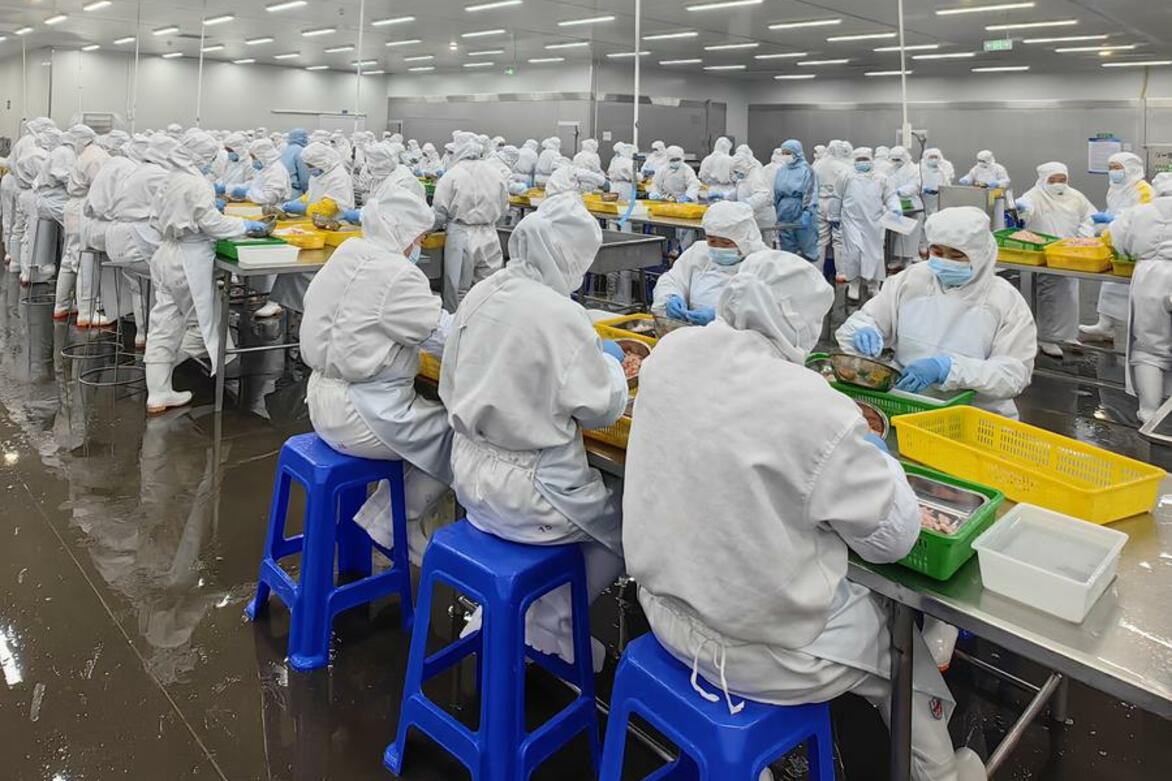Mountain factory powers seafood processing for global markets
Xinhua
02 Apr 2025

This photo taken with a mobile phone shows workers processing seafood at the production workshop of Chongqing Jiajiarong Foods Co., Ltd. in Qianjiang District, southwest China's Chongqing Municipality, March 12, 2025. (Xinhua/Wu Mengtong)CHONGQING, April 2 (Xinhua) -- Nestled deep in the mountains of southwest China's Chongqing Municipality, a seafood factory buzzes with activity as workers skillfully process a batch of Northern shrimp, an exotic species they hadn't even heard of just months earlier."These Northern shrimp were imported from Canada and will be processed here before being exported to Japan and other countries," said Wang Lezhi, general manager of Chongqing Jiajiarong Foods Co., Ltd.Spanning 18,000 square meters, the factory is located in Qianjiang District, a region nestled within the Wuling Mountains. It officially began operations last December.Before reaching the factory, the shrimp consignment undertook a 45-day journey -- shipped across the ocean to Qinzhou Port in south China's Guangxi Zhuang Autonomous Region, and then transported via freight trains through the New International Land-Sea Trade Corridor, a vital logistics network linking China's western regions to global markets.Once at the facility, the shrimp undergo a meticulous deep-processing procedure that includes cleaning, de-shelling, weighing, quick-freezing, and packaging. Within a week, they are transported to Rizhao Port in east China's Shandong Province before being shipped to sushi restaurants and supermarkets across Japan.Unlike China's coastal hubs, Qianjiang lacks the geographical advantages typically associated with foreign trade. Yet, against the odds, the district has carved out a niche in the global seafood industry."Policy support is the golden key that unlocked our access to the international market," Wang said.As part of China's broader strategy to foster collaboration between its eastern and western regions, as well as its rural revitalization drive, the company has benefited from a host of policy incentives. These include preferential logistics support for imports and exports, along with an abundant local labor force, both of which have helped slash operational costs.To boost its competitiveness, the company has also sent workers to China's coastal cities to learn advanced processing techniques. Thanks to these efforts, it expects to export over 80 tonnes of aquatic products by the end of April, with an export value of 760,000 U.S. dollars.Going ahead, the company is set to expand its business operations. A new domestic sales channel for South American white shrimp is slated to launch by late April or early May, while production of fish puree products is expected to commence in July or August, according to Wang.Beyond that, the company has ambitious plans to utilize shrimp by-products, such as heads and shells, in industries ranging from fish bait and biopharmaceuticals to cosmetics. This move is expected to drive growth in downstream industries and inject new momentum into rural development, he added.
